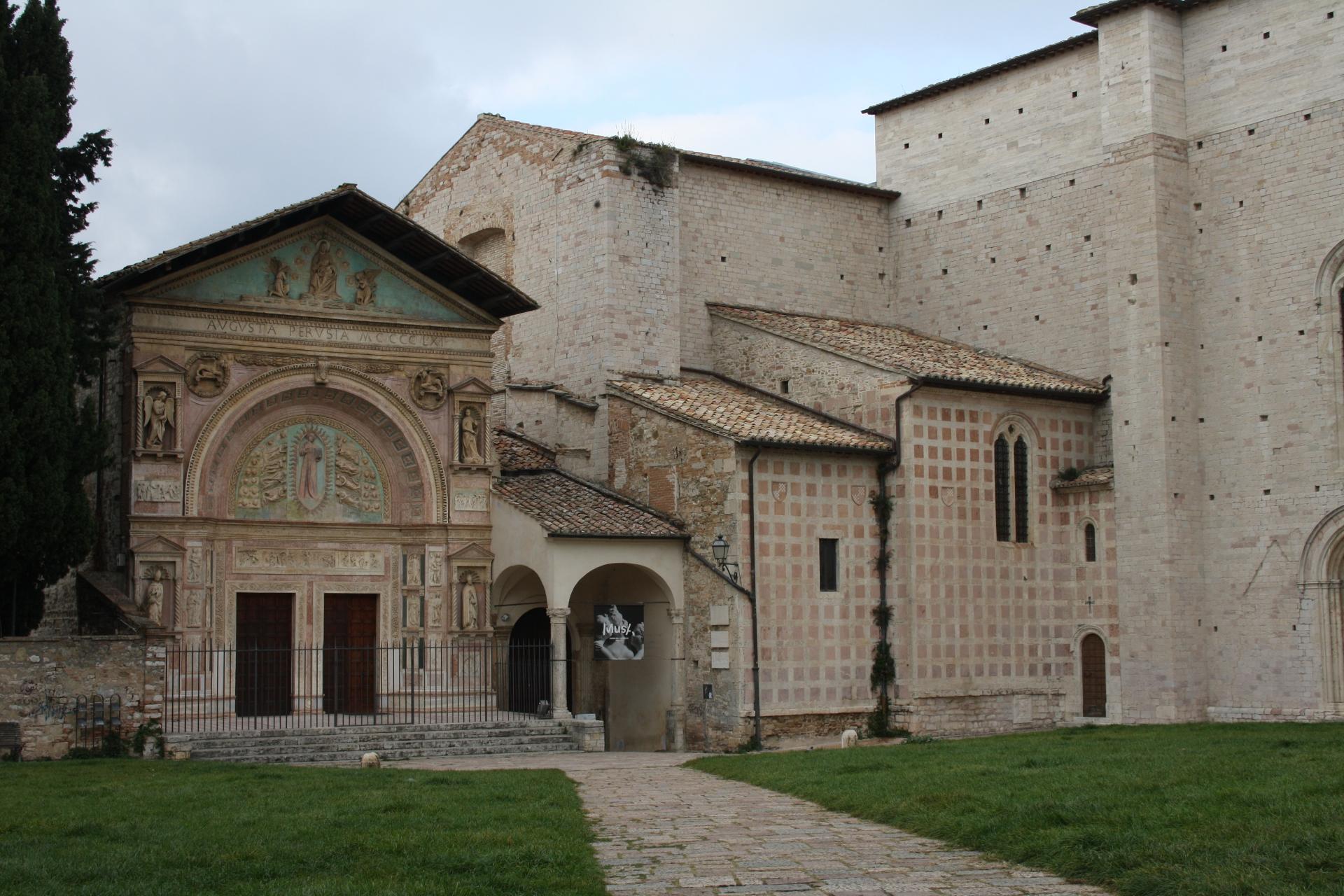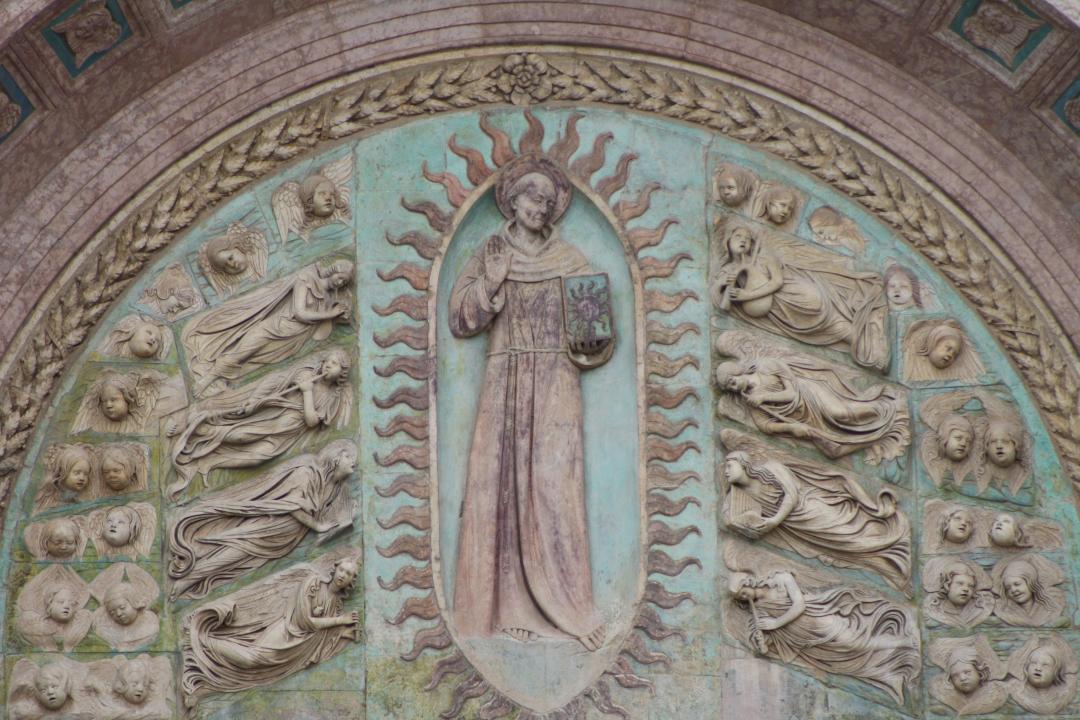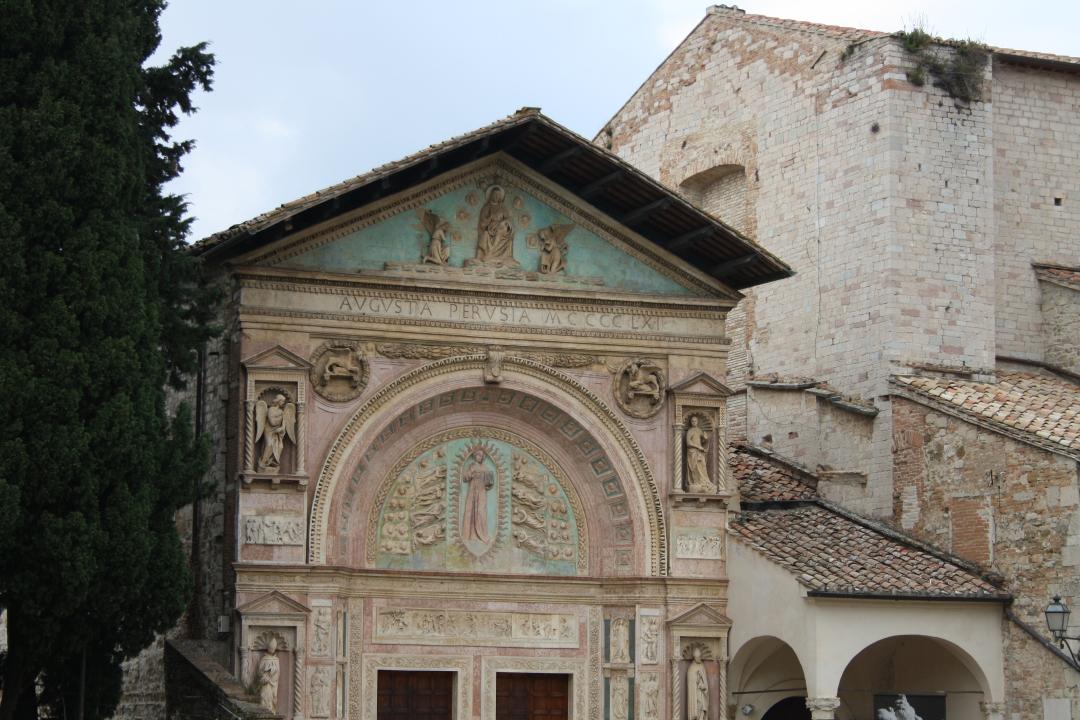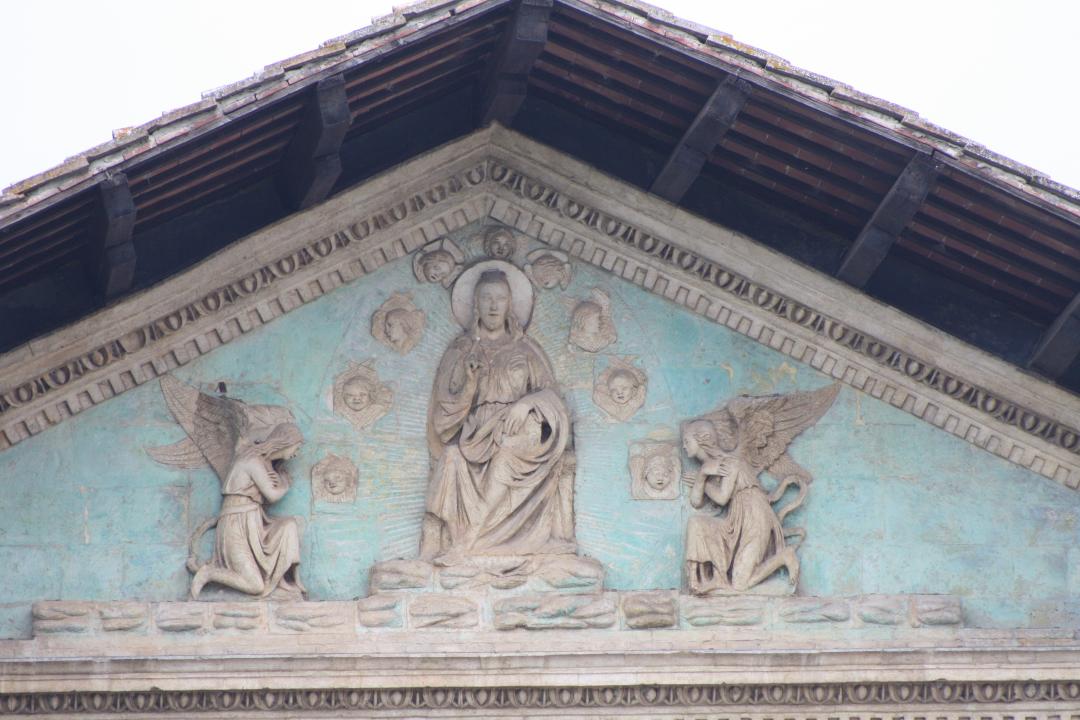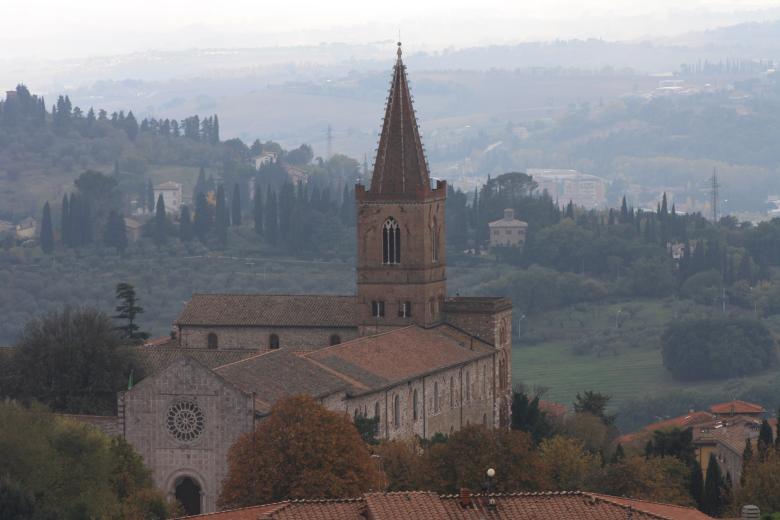The church has a single nave ending with a polygonal apse. The oratory of the Immaculate Conception of the Holy Brotherhood was built between the left side and the transept, in the middle of the 15th century. It was covered with inlaid white and pink marble which retained a banner of the Virgin of Misericordia, made by Mariano of Anthony and Benedict Bonfigli during the plague of 1464. The banner is now in San Bernardino Oratory.
With the internal division of Franciscan friars into Grey friars and Observants, San Francesco al Prato became the seat of the Grey friars, while the Observants had their headquarters in San Francesco in Monteripido. This church, so famous and rich of masterpieces, however, was the victim of numerous stability problems because the ground beneath it was soft. Starting in the 15th century, consolidation and restoration works were necessary until the church was fully restored and designed by Pietro Carattoli in the 18th century. But the high weight of the new buttresses, instead of helping the old Gothic structure, accelerated the collapse of the hill. Less than a century after Carattoli's rebuillding, it became necessary to demolish the dome, the vaults of the nave and transept and part of the apse walls.
In 1926 Pietro Angelini rebuilt the facade. It was made on the model of the ancient one and we have evidence of this in the Gonfalone of San Bernardino di Benedetto Bonfigli, now in the National Gallery. Ending with a tympanum and enclosed between two buttresses, the façade has white and pink geomentrical lining and colored inlays. The church is now deconsecrated and uncovered and together with the Convent houseing the Academy of Fine Arts in Perugia, is undergoing restoration works. Once restored, it will become the Auditorium of the city.
The church held masterpieces of extraordinary importance, among the most important: the great cross of the Master of San Francesco now in the National Gallery; the Baglioni Deposition and the Coronation of the Virgin by Raphael, today preserved preserved in the Galleria Borghese and the Vatican Pinacoteca in Rome. The Resurrection by Pietro Vannucci, known as Perugino, is also now in
the Vatican Pinacoteca.
For a great view of the Church and the San Bernardino Oratory it is strongly recommended to take the stairs of Via del Poggio and to reach the panoramic square of the same name.
























